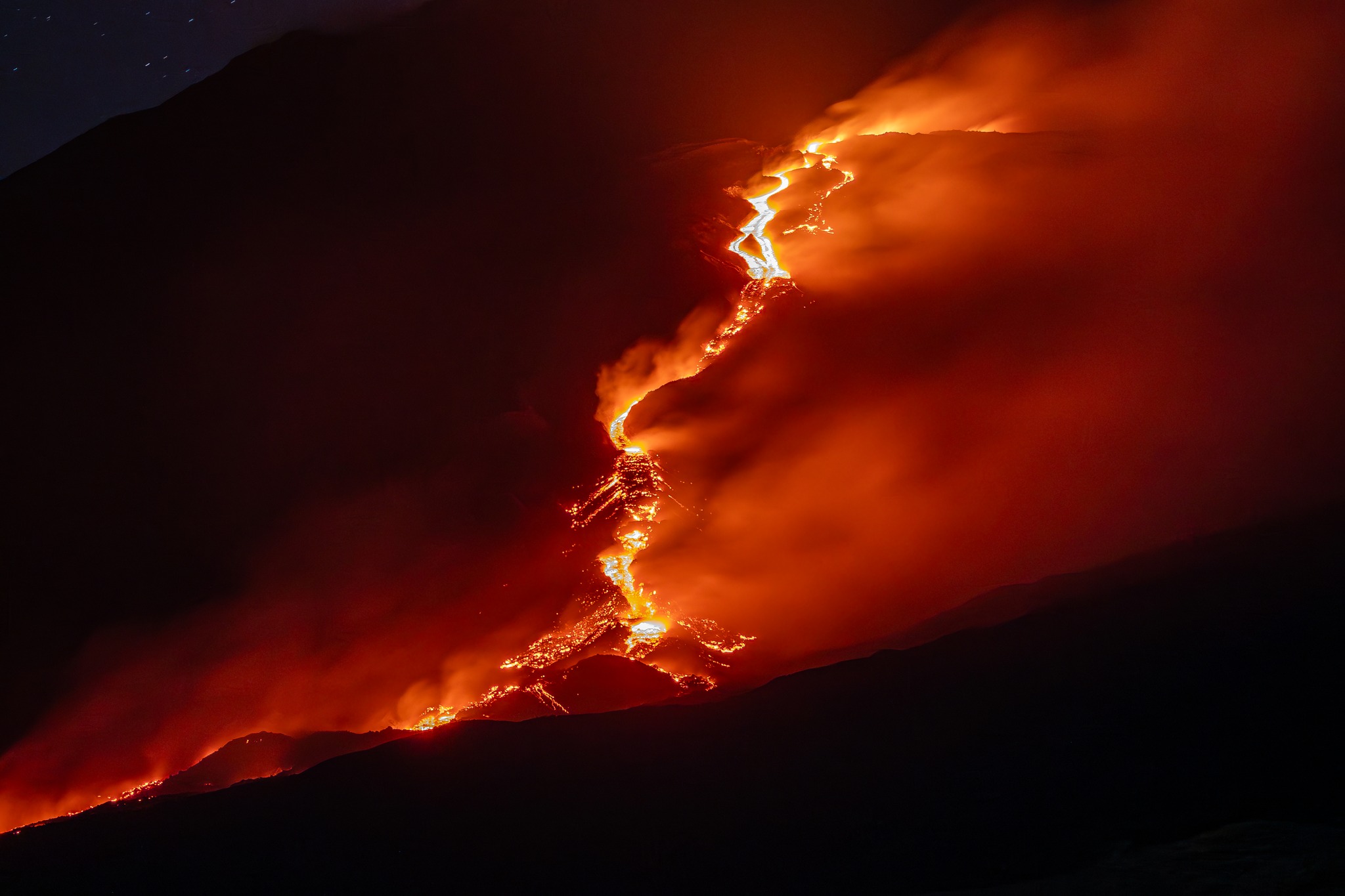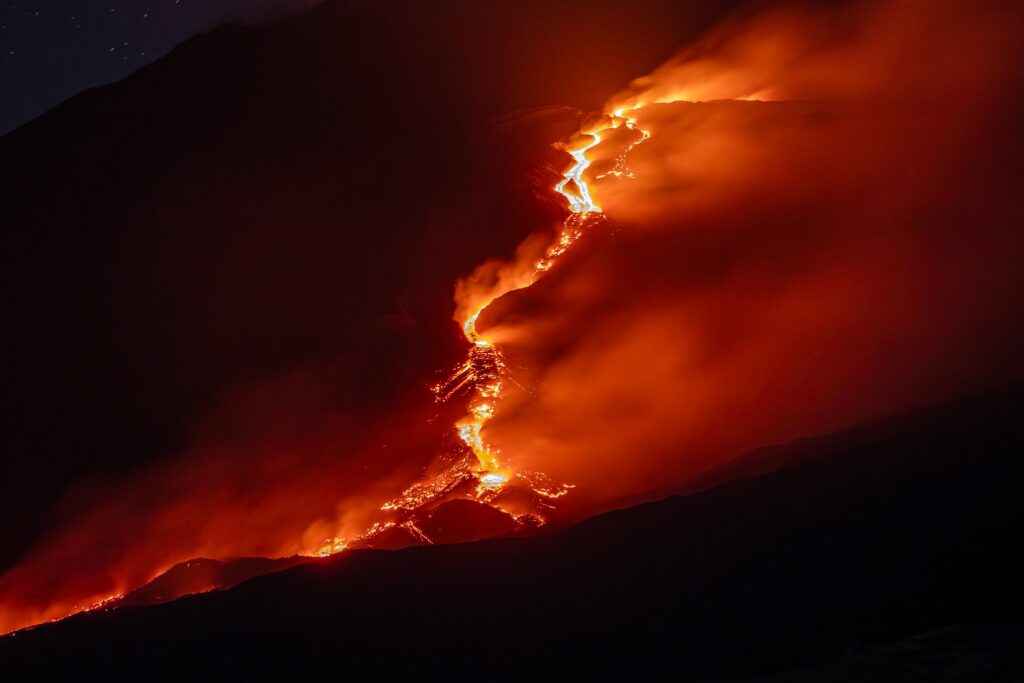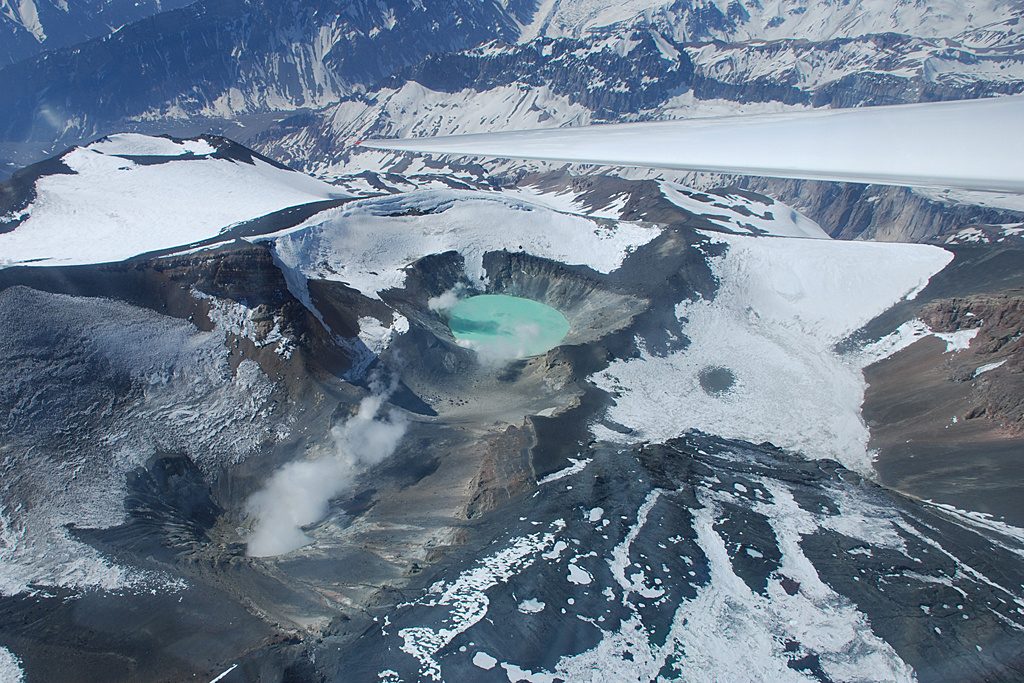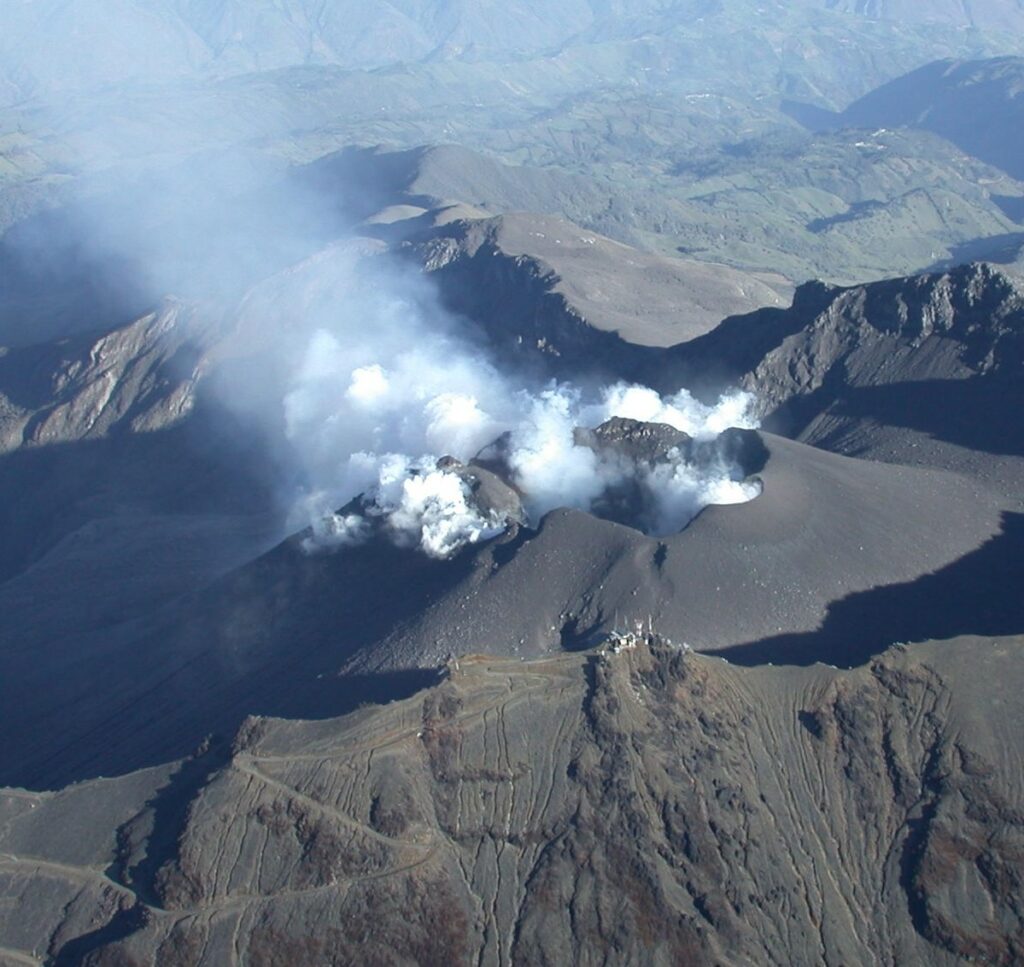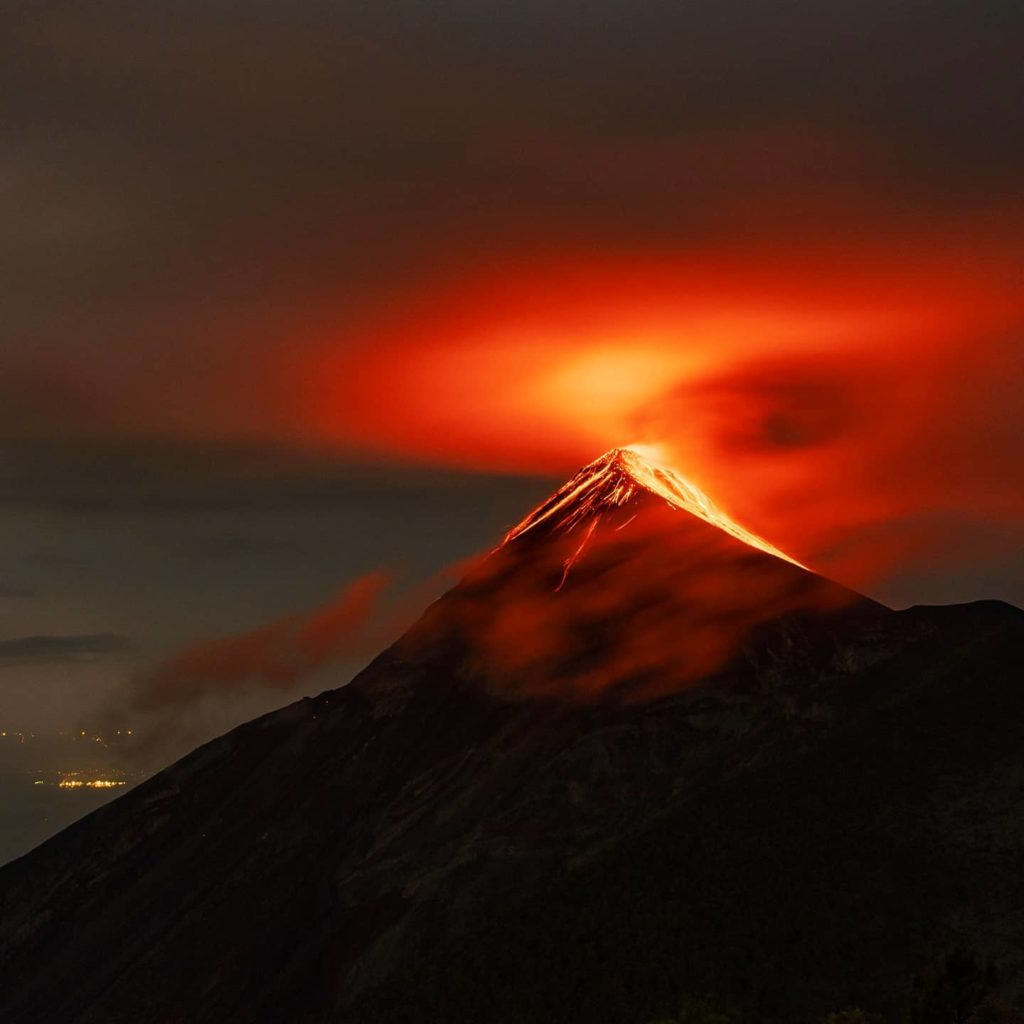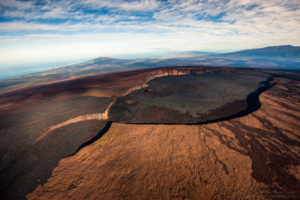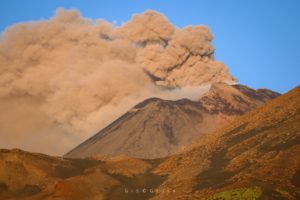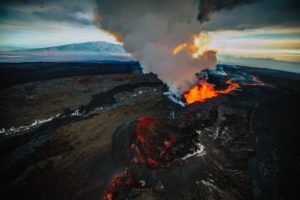August 29 , 2025.
Italy / Sicily , Etna :
Etna Activity Statement, August 28, 2025, 9:35 AM (7:35 UTC).
The National Institute of Geophysics and Volcanology, Osservatorio Etneo, reports that analysis of surveillance camera images shows that Strombolian activity continues with varying intensity in the southeast crater, with weak and sporadic ash emissions that disperse rapidly in the summit area. The effusive activity reported in the previous statement is also continuing.
From a seismic point of view, the average amplitude of volcanic tremor, as recorded in recent days, although sometimes showing large oscillations, remains high. The centroid of the volcanic tremor sources remains located in the area of the Southeast Crater, at an altitude between 2,900 and 3,000 m above mean sea level. Infrasound activity has shown an irregular trend in recent days. In particular, after the low infrasound activity that characterized the first hours of the day, from 6:15 UTC onwards, a clear increase in the number and energy of infrasound events has been observed. These, which mainly present medium or even high amplitude values, are located in the Southeast Crater. The ground deformation signals recorded by the networks currently show no significant change compared to the last few days. The DRUV dilatometer station continues to display a slow variation in decompression, accumulating a total of approximately -50 nano-strains to date since the start of the current effusive activity.
Updates will be provided shortly.
Source : INGV
Photo : Maurizio Formati / FB.
Chile , Tupungatito :
Special Volcanic Activity Report (REAV), Santiago Metropolitan Region, Tupungatito Volcano. August 28, 2025, 5:50 PM local time (Continental Chile)
The National Geology and Mining Service of Chile (Sernageomin) releases the following preliminary information, obtained using the monitoring equipment of the National Volcanic Monitoring Network (RNVV), processed and analyzed at the Southern Andean Volcanological Observatory (OVDAS):
Today, Thursday, August 28, at 2:13 PM local time (6:13 PM UTC), monitoring stations installed near the Tupungatito Volcano recorded an earthquake associated with the movement of very low-frequency (Very Long Period) fluids.
The earthquake characteristics after analysis are as follows:
TIME OF ORIGIN: 2:13 PM local time (6:13 PM UTC)
LOCATION: Originating from the volcanic edifice
DEPTH: Undetermined
Frequency: 0.4 Hz
Reduced Displacement (RD): 213 cm²
OBSERVATIONS:
Prior to this event, at 13:22 local time (17:22 UTC), an earthquake associated with fluid movement within the volcanic system was recorded, with a DR of 139 cm². This event exhibited a long-period (LP) seismic signal, with a dominant frequency close to 0.4 Hz. The observed low frequency suggests that it may be related to dynamic processes occurring at greater depths within the volcanic edifice. It is noteworthy that these are the first historical signals of this type detected in this system. Furthermore, simultaneously between 13:22 and 15:14 local time (17:22 and 19:14 UTC), a seismic fracture swarm classified as Volcano-Distal was recorded, with events located approximately 15 km ENE (East-Northeast) of the volcanic edifice. Although the frequency of these events has decreased in recent hours, the phenomenon continues to be the subject of close attention and monitoring to assess its evolution and potential implications for volcanic activity.
The technical volcanic alert remains in effect for: Green technical alert
Source et photo : Sernageomin
Colombia , Galeras :
San Juan de Pasto, August 26, 2025, 5:15 p.m.
Regarding the monitoring of the activity of the Galeras Volcano, the Colombian Geological Survey (SGC), an entity affiliated with the Ministry of Mines and Energy, reports that:
During the week of August 19-25, 2025, the main variations in the monitored parameters compared to the previous week were:
● A decrease in the number of earthquakes was observed, but with an increase in the seismic energy released. Seismic activity related to rock fracturing processes within the volcanic edifice remains predominant. ● Fracture earthquakes were observed throughout the volcanic region, at distances between 0.3 and 15 km, at depths between 0.5 and 14 km, from the summit of the Galeras volcano (4,200 m above sea level), with a maximum magnitude of 1.8. The largest earthquake was recorded on August 23 at 8:20 p.m. and was located 14 km northwest of the main crater, at a depth of 14 km.
● Gas emissions were recorded from the fumarole fields of El Paisita, to the north, from Las Chavas, to the west of the active cone, and from the floor of the main crater, in the form of low, white columns, whose dispersion varies depending on the wind direction.
● Other volcanic monitoring parameters have shown stability.
Based on the above, the SGC recommends closely monitoring its development through weekly bulletins and other information published through our official channels, as well as instructions from local and departmental authorities and the National Disaster Risk Management Unit (UNGRD).
Volcanic activity remains on yellow alert: active volcano with changes in the baseline behavior of monitored parameters and other manifestations.
Source et photo : SGC.
Guatemala , Fuego :
Atmospheric Conditions: Clear
Wind: East
Precipitation: 0.0 mm
Morphology: Composite stratovolcano
Type of Activity: Volcanic
Activity
The Fuego Volcano Observatory reports favorable conditions for observing the crater. Between 5 and 11 weak and moderate explosions are recorded per hour, lifting columns of grayish gas to an altitude of 4,500 to 4,800 meters (14,764 to 15,748 feet). Under the action of the wind, these columns move westward at distances of 10 to 30 km. Some of these explosions project incandescent material up to 200 meters above the crater. Similarly, some are accompanied by faint rumbling sounds.
Noises similar to those of an airplane turbine have been heard due to the outgassing. Light ash fall is expected on Finca el Recreo, Sangre de Cristo, and the surrounding area. If rain occurs during the day, it may cause torrents and/or lahars. It is recommended not to stay in or near these ravines due to the presence of rain on the volcanic edifice.
Source : Insivumeh
Photo : Diego Rizzo ( 2021)
La Martinique , Mount Pelée :
Weekly Report, Paris Institute of Earth Physics / Martinique Volcanological and Seismological Observatory
Saint-Pierre, August 22, 2025 at 5:15 p.m. local time (GMT-4)
Volcanic activity increased significantly this week, with 659 earthquakes of volcanic origin observed.
Between August 15, 2025, at 4:00 p.m. (UT) and August 22, 2025, at 4:00 p.m. (UT), the OVSM recorded:
• 655 volcano-tectonic earthquakes. Among them, 19 had a duration magnitude greater than Md = 0.5, and the largest had a magnitude Md = 1.1. The others were of lower energy. These
earthquakes were clearly identified as originating from one of the well-known seismically active zones at Mount Pelée, located between 1.0 and 1.4 km deep beneath the volcano’s summit.
The shallow volcano-tectonic seismicity is associated with microfracturing within the volcanic edifice, linked to the overall reactivation of the volcano observed since late 2018.
• Four shallow hybrid earthquakes, with a maximum local magnitude of Mlv = 0.8, were located approximately 1 km deep beneath the domes of Mount Pelée in the same area as the volcano-tectonic earthquakes. The hybrid seismic signals are enriched at low frequencies and are associated with the presence of fluids (gas, hydrothermal fluids) within the volcanic edifice.
These earthquakes occurred mainly during a first sequence that began on August 13th around 11:30 PM (UT) and ended on August 19th around 1:00 AM (UT), and during a second sequence that began on August 21st around 10:00 PM (UT) and is still ongoing.
No earthquakes were felt by the population.
The previous week, the OVSM recorded 218 earthquakes of volcanic origin. As of August 22, 2025, and over the past four weeks, the OVSM has therefore observed a total of 1,320 volcanic earthquakes, an average of 330 earthquakes per week.
During phases of volcanic reactivation of volcanoes similar to Mount Pelée, it is common to observe seismic activity of varying intensity and frequency. For more details on longer-term observations and interpretations of volcanic activity, refer to the OVSM monthly bulletins.
The alert level is currently YELLOW: vigilance.
Source et photo : OVSM.

